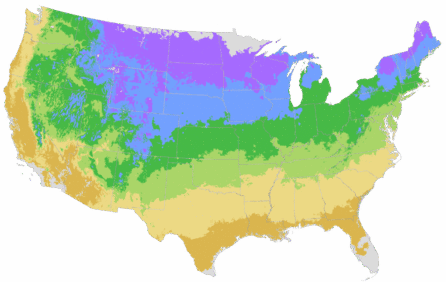You're growing in this Zip Code:
Change LocationDiscover Plants for Your Area
Virginia Creeper
Parthenocissus quinquefolia
Retailers Near You
No Retailers found within 50 miles of your zipcode
Be Inspired: How to Use this Plant
| Bloom Time | Inconspicuous; prized for foliage. |
|---|---|
| Deciduous/Evergreen | Deciduous |
| Special Features | Fall Color, Waterwise, North American Native, Fast Growing, Benefits Birds |
| Problems/Solutions | Coastal Exposure, Erosion Control, Rabbit Resistant |
| Growth Rate | Fast |
| Landscape Use | Ground Cover |
| Foliage Color | Green |
| Companion Plants | Ninebark (Physocarpus); Euonymus (Euonymus); Juniper (Juniperus); Potentilla (Potentilla); Mock Orange (Philadelphus) |
| Care Instructions | Grows easily in average, well-drained soils; adaptable to most soil types. Water deeply and regularly during the first growing season to establish an extensive root system; reduce frequency once established. Feed with a general purpose fertilizer. Provide support such as a wall or fence. Prune annually to control size. |
| Lore | The berries of Virginia Creeper can be harmful if ingested, however, and the rest of the plant contains raphides, which irritate the skin of some people.The berries of this North American native plant provide an important winter food source for birds. While it is documented that early Native Americans used the plant as an herbal remedy for a number of ailments, the berries contain oxalic acid, which is considered to be moderately toxic to humans and other mammals. To help distinguish Virginia Creeper from a somewhat similar-looking Poison Ivy (Toxicodendron radicans), this rhyme has been often taught to children: Leaves of three, let it be; Leaves of five, let it thrive. Poison Ivy leaflets are normally presented in groups of three, while those of Virginia Creeper are in groups of five. |
| Bloom Time | Inconspicuous; prized for foliage. |
|---|---|
| Deciduous/Evergreen | Deciduous |
| Special Features | Fall Color, Waterwise, North American Native, Fast Growing, Benefits Birds |
| Problems/Solutions | Coastal Exposure, Erosion Control, Rabbit Resistant |
| Growth Rate | Fast |
| Landscape Use | Ground Cover |
|---|---|
| Foliage Color | Green |
| Companion Plants | Ninebark (Physocarpus); Euonymus (Euonymus); Juniper (Juniperus); Potentilla (Potentilla); Mock Orange (Philadelphus) |
| Care Instructions | Grows easily in average, well-drained soils; adaptable to most soil types. Water deeply and regularly during the first growing season to establish an extensive root system; reduce frequency once established. Feed with a general purpose fertilizer. Provide support such as a wall or fence. Prune annually to control size. |
|---|
| Lore | The berries of Virginia Creeper can be harmful if ingested, however, and the rest of the plant contains raphides, which irritate the skin of some people.The berries of this North American native plant provide an important winter food source for birds. While it is documented that early Native Americans used the plant as an herbal remedy for a number of ailments, the berries contain oxalic acid, which is considered to be moderately toxic to humans and other mammals. To help distinguish Virginia Creeper from a somewhat similar-looking Poison Ivy (Toxicodendron radicans), this rhyme has been often taught to children: Leaves of three, let it be; Leaves of five, let it thrive. Poison Ivy leaflets are normally presented in groups of three, while those of Virginia Creeper are in groups of five. |
|---|
Retailers Near You
No Retailers found within 50 miles of your zipcode
Retailers Near You
No Retailers found within 50 miles of your zipcode
Buy Online
We cannot currently ship this product to your zip code.
About Us
We have been pioneers and craftsmen in the art of growing plants for nearly
100 years. Since our founding in Southern California by Harry E. Rosedale, Sr.
in 1926, we have been absolutely dedicated and obsessed with quality.
We have been pioneers and craftsmen in the art of growing plants for nearly 100 years. Since our founding in Southern California by Harry E. Rosedale, Sr. in 1926, we have been absolutely dedicated and obsessed with quality.






